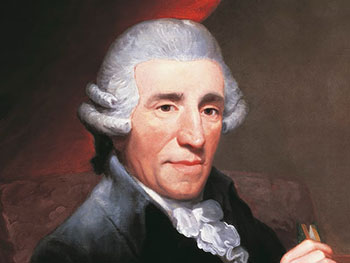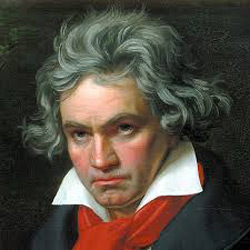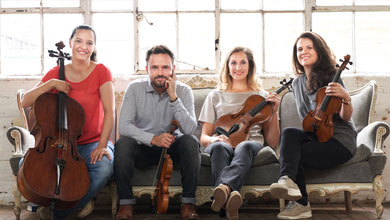Program
Franz Joseph Haydn
String Quartet in D minor, Op. 103, Hob.lll:83
I Andante grazioso
II Menuetto ma non troppo, Presto-Trio
Ludwig van Beethoven
Quartet No. 14 in C-sharp minor, Op. 131
I Adagio ma non troppo e molto espressivo
II Allegro molto vivace
III Allegro moderato
IV Andante, ma non troppo e molto cantabile
V Presto
VI Adagio quasi un poco andante
VII Allegro
Elias String Quartet
Sara Bitlloch, violin
Donald Grant, violin
Simone van der Giessen, viola
Marie Bitlloch, cello
“There’s something intoxicating about the Elias String Quartet…Intensely absorbing, exquisitely considered…Stunning. — Philadelphia Inquirer. The Elias Quartet was formed in 1998 in the UK where they were in school together in Manchester. They were chosen to participate in the BBC radio’s New Generation Artists’ scheme and were a recipient of a Borletti-Buitoni Trust Award, which allowed them to study and perform all of Beethoven’s string quartets culminating in a cycle performed at Wigmore Hall. The Elias is steadily building a recording catalogue that has been met with widespread acclaim.
The Elias String Quartet take their name from Mendelssohn’s oratorio, Elijah, of which Elias is its German form, and quickly established themselves as one of the most intense and vibrant quartets of their generation. The Quartet was formed in 1998 at the Royal Northern College of Music in Manchester, where they worked closely with the late Dr. Christopher Rowland. They also spent a year studying at the Hochschule in Cologne with the Alban Berg quartet. Between 2005 and 2009, they were resident String Quartet at Sheffield’s “Music in the Round” as part of Ensemble 360, taking over from the Lindsay Quartet. They are now ensemble in residence at the Royal Northern College of Music and regularly return there to teach and perform.
In 2009, the Elias was chosen to participate in BBC Radio 3’s New Generation Artists’ scheme and was also a recipient of a Borletti-Buitoni Trust Award. With the support of the Trust, the Elias Quartet mounted “The Beethoven Project,” studying and performing all of Beethoven’s string quartets as cycles while sharing their experience through a special website (www.thebeethovenproject.com) and social media. The project culminated with a cycle at Wigmore Hall, all six concerts recorded for the Wigmore Live label. The quartet has since performed complete Beethoven cycles at numerous venues worldwide, most recently at Tokyo’s prestigious Suntory Hall in June 2023.
The Quartet is steadily building a recording catalogue that has been met with widespread critical acclaim. They have recorded the Schumann and Dvořák piano quintets with Jonathan Biss, a Britten Quartets disc for Sonimage, a Mendelssohn disc for ASV Gold and Schumann string quartets for Outhere. Their two mixed program recordings for Wigmore Live were praised unanimously, the first winning a BBC Music Magazine Newcomers award. Most recently, they have recorded the complete Beethoven quartets live at Wigmore Hall, released in six volumes to great critical acclaim. BBC Music Magazine described their performance as “simply astounding, in the freshness, intensity, assurance, and seeming spontaneity of their playing.”
The Elias String Quartet appears through arrangement with David Rowe Artists, www.davidroweartists.com
Program Notes
Because the composers on today’s program and the string quartet genre are already familiar territory for the CCMS audience, we would like to discuss string instruments themselves before diving into today’s two works. CCMS’s president, Liz Stein, is a musical professional and kindly shared some thoughts. Liz is a violinist (she started at age 8 and plays daily) and is also a string instrument dealer. One of the very few women in the business, she works with William Harris Lee & Co, a dealer and luthier (maker) of high-end string instruments in Chicago.
Liz has often worked with old Italian instruments made by storied makers from 18th century Italy such as Stradivari, Guarneri del Jesù, Amati, Bergonzi, Gagliano, and Guadagnini. Only a limited number of instruments exist from this golden era of string instrument craftsmanship in Italy. Their 300-year old instruments are magnificent, and often have multi-million dollar prices to match (this February, a 1714 Stradivarius sold for $11.25 million). Many are lent or leased to players, who become their caretakers. Caveat emptor: just because an instrument is old and Italian doesn’t guarantee quality! Liz notes that there are wonderful modern luthiers worldwide who make superb instruments that are more affordable. Thus, a musical pro may choose to own several instruments, both antique and modern. High-end bows (such as those made by 19th century French masters Tourte and Peccatte) are also collectors’ items, and can cost more than the instrument.
A luthier requires several weeks to make an instrument. First, the wood (spruce for the top, maple for almost everything else) is aged for ten to fifteen years before being used. Each instrument, whether violin, viola, cello or double bass, uses four strings made of a steel core wrapped with either silver, aluminum, gold, nickel or tungsten. Each of these options has a different “color”, and musicians make their selection according to their instrument, the repertoire being played, and/or the performance. The bow, sold separately, uses horsehair humanely harvested from the animal’s tail. Fine bows are crafted from Pernambuco wood and decorated with silver, pearl, or shell. Antique bows may also feature ivory, ebony or tortoiseshell, which are tightly protected by international law. To avoid problems at Customs, the professional travelling internationally will use a bow that doesn’t have these regulated materials. Finally, there’s the critical matter of varnish. Varnish does more than just provide a protective sheen to a violin. It influences the vibrations and impulses that the wood absorbs, and therefore the quality of sound that the instrument produces. In fact, some credit the special qualities of old Italian instruments to their varnish.
Musicians looking for a fine instrument, old or new, will evaluate the instrument’s responsiveness, projection, warmth or brightness, and power. They will match the instrument to the music, be it solo, chamber, or symphonic, which each have different requirements. Finally, string quartet members must meet the musical challenge of blending their four, distinct instruments into an ensemble and may make their instrument selection accordingly.
Click here for an interesting performance comparison between a $69 modern factory violin and a $10,000,000 Stradivarius. Click here for a discussion titled “Why we can’t make new Stradivari violins?” There are quite a few YouTube videos comparing antique violins in performance, though YouTube isn’t a very satisfying way of hearing subtle differences. You might use earphones to help hear more clearly.
Franz Joseph Haydn (1732-1809)
String Quartet in D minor, Op. 103, unfinished. (1803)
Performance time: 11’
In 1803, the United States purchased the Louisiana Territory from France for $15 million. British engineer Richard Trevithick invented the steam railway locomotive. Birth of Ralph Waldo Emerson.

Franz Joseph Haydn (1732-1809)
The work we hear today is the last string quartet that Haydn composed. Struggling with cardiac disease, he had accepted a commission for six quartets. He started to write the two inner movements of this quartet, perhaps hoping to finish the outer two when he was feeling better. But he soon realized that his illness would prevent him from doing that, and decided to publish these two movements as his last composition; thus, it is an “unfinished” quartet.
The Andante movement incorporates several of Haydn’s string quartet compositional techniques. For example, he gives each instrument its own voice and role. Also, he repeats the opening theme several times before moving on to the development section, where he repeats it but this time slightly changed, as a variation. He ends the section with a return to the opening theme in its original form. The only feature of the following Minuetto that sounds like a Minuet is the fact that it is in 3/4 time, like a waltz. But the movement’s mood, its heavy accents and the virtuosity demanded of the players all work to bring this, Haydn’s final composition, to a brilliant and masterful ending.
Click here for an outstanding 1974 performance of these two movements by the acclaimed Juilliard String Quartet. This quartet has been in residence at Juilliard since its founding in 1946, and has performed for the. Chicago Chamber Music Society. Unlike many string quartets which disband after one or more of their founders leave, the Juilliard has had four or five successive performers for each of the four instruments, keeping it truly young and fresh.
Ludwig van Beethoven (1770-1827)
String Quartet no. 14 in C-sharp minor, op. 131 (1826)
Performance time: 39’
In 1826, John Adams and Thomas Jefferson (second and third U.S. presidents) died on July 4, 1826, the 50th anniversary of the signing of the Declaration of Independence. James Fenimore Cooper’s The Last of the Mohicans was published.

Ludwig van Beethoven (1770-1827)
It has been reported that this quartet was Beethoven’s favorite of the sixteen that he wrote, and many musicians as well as listeners consider it to be the greatest quartet ever written. It was the next-to-last quartet that he wrote, and he died the following year in 1827. Quite long (almost forty minutes), Opus 131 is made up of seven movements which are played without pause, creating a completely organic, integrated whole.
The introductory Adagio is a very slow fugue, based on the violin’s sober melody, and is contemplative and serene. It moves into the fast, cheery second movement, followed by a very short third Allegro moderato that serves as an introduction to the Andante. This, the fourth movement, is the center of the entire quartet, and is in theme-and-variations (six of them) form. The next section is a Presto, playful and humorous, but treacherously difficult. It requires great delicacy of touch and virtuosity to achieve the smooth flow to create a whirlwind effect. Next, the viola introduces a brief Adagio, a mournful, introspective melody you might recognize from an episode of the World War II miniseries Band of Brothers. It moves directly into the final Allegro, with a powerful, angry martial theme. Then comes a contrasting melody, derived from the fugue at the start of this quartet. This is followed by a second theme, a shortened development, a recapitulation, and then a final coda.
This quartet was played for Schubert on his deathbed, prompting him to say, “After this, what is left for us to compose?”
Click here for a 2018 performance of this work by the Danish String Quartet, one of the world’s preeminent string quartets and who perform frequently in the Chicago area.
Program Notes by Louise K. Smith
With thanks to Lucy Murray Miller, Carnegie Hall and Melvin Berger.

Elias String Quartet
Subscribe
Today!
Individual tickets may be purchased at the door (cash or check only) immediately before each concert.
All concerts are held at a private club just off Michigan Avenue in Chicago.
Call or email for more information
815-314-0681
office@ChicagoChamberMusicSociety.org